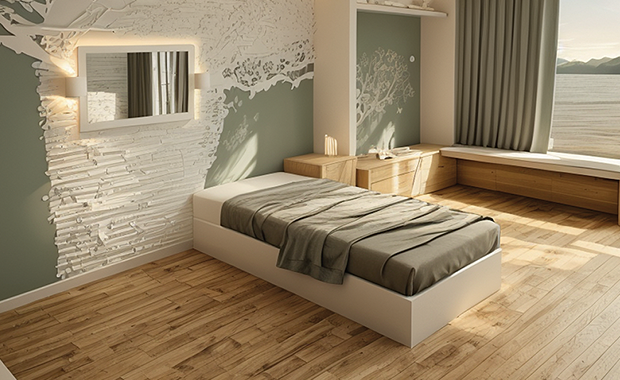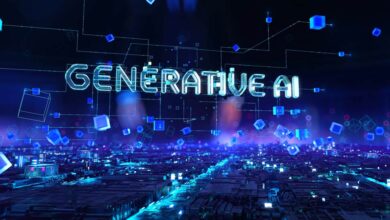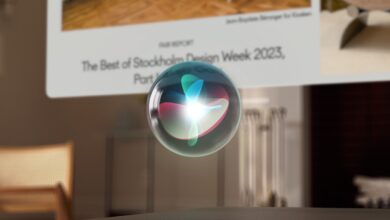AI Meets Analogue: Harmonizing Mock-ups With Generative AI

Hands-on collaboration is a key phase in developing designs for healthcare projects. Traditionally, this process involves gathering professionals and end users in a room with life-sized design elements—walls, desks, beds, etc.—crafted from cardboard and foam to see how participants interact with space. These mock-up sessions give health professionals a realistic feel of the layout, allow them to move around in spaces, and deliver feedback on design ideas in real time. It’s an invaluable and low-tech approach to designing for healthcare.
As new visualization technology—virtual reality (VR), for example—has become available, design teams are finding opportunities to enhance this process. By increasing the level of realistic detail during mock-ups, project teams can give collaborators more visuals to react to and comment on, resulting in more valuable feedback to help guide the design process forward. The introduction of generative artificial intelligence (AI) is taking visualization to the next level.
AI allows a project team to rapid prototype, comparing design iterations quickly and refining ideas, such as enhancing or adding biophilic elements, in fractions of the time of previous digital methods. For example, if users want more natural light, an AI technician can make the changes, dialing into a certain time of day, climatic condition, or season, and then asking follow-up questions, such as “Is that too much light, or not enough?” or “Should we add a window or additional texture?” All in real time.
Using AI design workshops
Experts from Stantec’s Philadelphia, Washington, D.C., and Los Angeles offices hosted a pre-conference workshop at the 2023 Healthcare Design Conference + Expo in New Orleans to test this new collaborative approach, combining the typical analog mock-up process with the power of generative AI.
The Stantec team comprised behavioral health planners, cardboard mockup specialists, and an AI designer. They were joined by two behavioral health furniture vendors and researchers from Texas A&M University (College Station, Texas). Participants collaborated on the design concept for two behavioral health spaces. A care desk and a patient room were designed to serve adult patients with an eating disorder diagnosis, and the other space was intended to serve higher-acuity pediatric behavioral health patients.
Participants were educated on the process for design and prototype creation and approaches to behavioral health environments. They were then split into two groups, each led by a behavioral health designer, and assigned a stakeholder persona, such as patient, family member, nurse, or psychiatric specialists. This step gives collaborators a chance to move out of their day-to-day jobs, leave their personal biases behind, and take on the role of advocating for others.
Each of the physical mock-ups featured real furniture as well as modular cardboard items, such as bathroom fixtures and doors, built-in storage, bench seating, and windows, as well as care desks and enclosed glazing.
For example, the patient room on the eating disorder unit is a lower-acuity space so the furniture options were greater and more hospitality oriented, helping deinstitutionalize the space with simulated wood grain materials and furniture to contrast the cardboard.
Participants were invited to move these elements around to find a preferred layout and then photos of the arrangements were taken and sent to the AI designer. Participants were also asked a series of questions about finishes, feel, and aesthetics, such as what kind of materials they preferred and how much light they wanted in a space. Based on their input and using a generative AI engine, the technician created realistic renderings in 3D that participants could experience virtually on monitors or using VR goggles.
Designers also suggested different elements, such as lighting, finishes, or biophilic features, to see how they affected the design and fine-tune it to stakeholder preferences.
For example, collaborators in New Orleans asked for more hospitality-inspired elements such as natural wood and daylight, which they felt would help put behavioral patients at ease. In a few moments, a photo-realistic version of the space was rendered and could be experienced virtually by the participants.
Benefits of AI-assisted collaborations
Enhancing the traditional mock-up with generative AI requires infrastructure such as significant computing power, expertise in AI prompt, as well as a clear process to follow.
For example, in the mock-up workshop, Stantec’s AI Designer Brendan Mullins leveraged an open-source generative AI platform as a rapid-prototyping workflow for quickly turning images into renderings, while maintaining the original intent of the source image. The system requires only a strong computer similar to those used for video gaming, so it can be operated from anywhere. This means it can be taken to the client, job site, and meetings.
While AI-assisted collaborations are still new, several advantages are already emerging, including:
- It’s fast and realistic. In this process, realistic renderings of mock-up spaces can be generated based on input from the participants, such as suggested lighting, finishes, or biophilic features. This exercise allows participants to see the effects of their design decisions in real time and adjust as needed. They also get a clearer idea of what a finished space will look like.
- It’s image-prompt agnostic. Cardboard mock-ups are one of many image prompts that could be used in this workflow. For example, the mock-up photos could be replaced with hand sketches, screenshots of digital models, or photographs of existing buildings.
- It’s fun. This process can make the workshops more interactive and playful. It’s a thrill for participants to suggest different elements and immediately see how they affect the design. At the mental health workshop, participants shouted out requests and expressed their approval as the imagery changed before their eyes.
- It deepens engagement. Changes can be reflected in the design right way, allowing users to know they have been heard. Furthermore, using stakeholder personas, they can see how the spaces would look and feel from diverse perspectives and advocate for design elements to address those needs.
- It democratizes the design process. As much as designers like to draw, the images we make by hand take time and require interpretation. This process does not rely on the hand or skill of a single designer but on the group’s collective input. It’s a great way to build buy-in and enthusiasm around a design to move it forward. The design team can take the inspirational images and incorporate those ideas as the design develops further.
Evolving the design process
With the burgeoning use of AI across society—from text-based to generative imagery and rapid video creation—the healthcare design industry is grappling with how best to leverage this technology for the benefit of its clients, colleagues, and communities. Humans are at the heart of healthcare environments, and AI is another great tool to complement existing design approaches.
By democratizing the design process with generative AI, patients, staff, and family can feel greater ownership of the spaces that affect them. Designers can hopefully be freed up to exercise greater empathy in the process while crafting more immersive and experiential sensory environments through rapid rendering
Brendan Mullins is the digital delivery lead for U.S. West at Stantec (San Francisco) and can be reached at brendan.mullins@stantec.com. Stephen Parker is a behavioral and mental health planner at Stantec (Washington, D.C.) and can be reached at stephen.parker2@stantec.com. Jon Sell is a principal at Stantec (Philadelphia) and can be reached at jon.sell@stantec.com.



